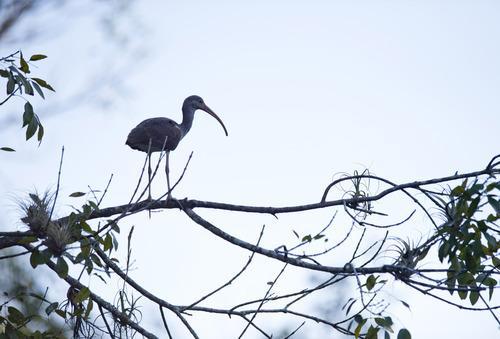Study: Climate Change May Be Causing Smaller American Birds
A new study has found that North American migratory birds have been getting smaller over the past 40 years.
Researchers say the finding suggests a warming climate could be affecting bird growth in North America — and across the world.
The study was recently published in Ecology Letters. It involved data on nearly 80,000 birds killed from 1978 to 2016 in the city of Chicago, Illinois. Researchers measured the size of the birds. The birds included in the study had died after crashing into buildings during the spring and fall migrations.
Fifty-two species of birds were studied. Most were different kinds of songbirds. These birds reproduce in cold areas of North America and spend their winters in areas south of Chicago.
Over the 40-year period, body size decreased in all 52 species. The average body mass fell by 2.6 percent. Leg bone length dropped by 2.4 percent.
The one area of growth was the wingspan, which increased by 1.3 percent. The researchers said the wing growth likely happened to permit the birds to continue making long migrations with smaller bodies.
The study considered a principle known as Bergmann's rule, in which individuals within a species grow smaller in warmer areas and grow larger in colder ones.

Brian Weeks is a biologist at the University of Michigan's School for Environment and Sustainability. He helped lead the research.
He told the Reuters news agency that he believes the results show a clear link between a warming climate and the growth of the birds. "In other words, climate change seems to be changing both the size and shape of these species," he said.
The study found a direct link between the average summer temperature and the body size of the birds.
Dave Willard works with Chicago's Field Museum, which was in charge of measuring all the birds. He said nearly "everyone agrees that the climate is warming, but examples of just how that is affecting the natural world are only now coming to light."
The study provides new evidence of worrisome developments for North American birds. A study published in September documented a 29-percent drop in the bird population in the United States and Canada since 1970. The study said this represented a net loss of about 2.9 billion birds.
Weeks said the new study is the largest examination yet to measure body size reactions to warming temperatures involving a large, diverse group of species.
"We had good reason to expect that increasing temperatures would lead to reductions in body size, based on previous studies," Weeks added. "The thing that was shocking was how consistent it was. I was incredibly surprised that all of these species are responding in such similar ways."
The researchers plan to continue studying the Field Museum data in an effort to find additional evidence to support their findings. They will also further examine the idea that an individual's physical development can change to fit changing environmental conditions.
I'm Bryan Lynn.












